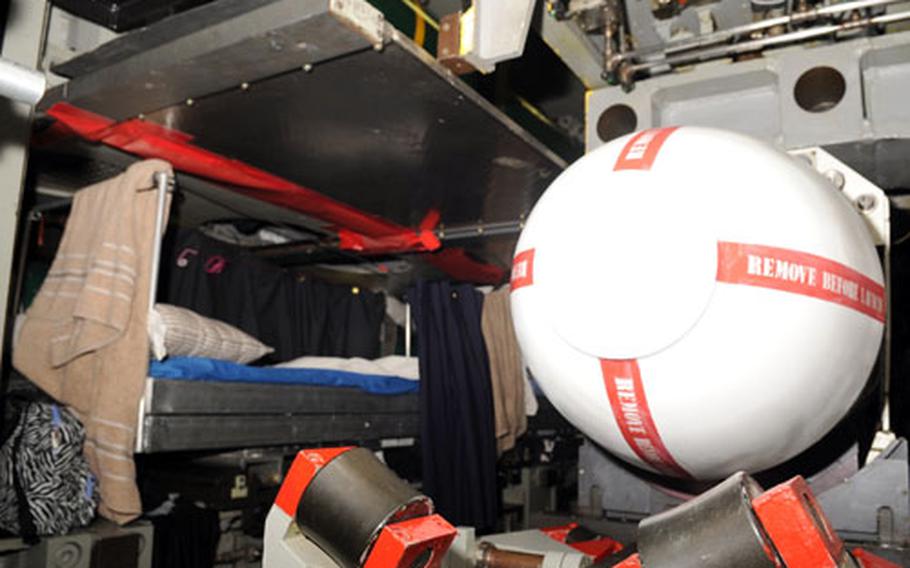
Torpedomen aboard the USS Seawolf sleep near their weapons, like the Tomahawk missile to the right. (Erik Slavin / S&S)
YOKOSUKA NAVAL BASE, Japan — Petty Officer 3rd Class Chad Kahl never suffered from a lack of open space while growing up in North Dakota.
When he told friends and family there that he had volunteered to live aboard a 350-foot-long metal tube underneath hundreds of feet of water, they thought he was crazy.
Kahl had done his homework on the submarine lifestyle. But as he prepared to get under way for the first time, he wondered if his friends may have had a point.
“I think everyone that goes doesn’t really know what they’re getting into,” said Kahl of the USS Seawolf. “I had never been underneath water before. I was nervous. I didn’t know what to expect.”
Like most sub school graduates, Kahl adapted to his surroundings
.However, not everyone is made for sub duty, says Lt. Robert Lovern, a doctor with a psychiatry background and Submarine Group Seven’s undersea medical officer.
Claustrophobia, stress, unusual working conditions and lack of privacy can all lead prospective submariners right back out of the hatch.
.“What gets people is the confinement and the inability to escape,” Lovern said.
All sailors who volunteer for sub duty complete a screening questionnaire at Naval Submarine School in Groton, Conn
.If any red flags pop up, they are interviewed by medical personnel.
“When I got to my first submarine, I was very claustrophobic, very nervous, very timid,” said 21-year sub veteran and Seawolf Chief of the Boat Jared Hofer of Freeman, S.D. “I used to have nightmares of the boat doing things where we didn’t come back. Obviously I survived. [Now] I feel safer on a submarine than I do on the surface.”